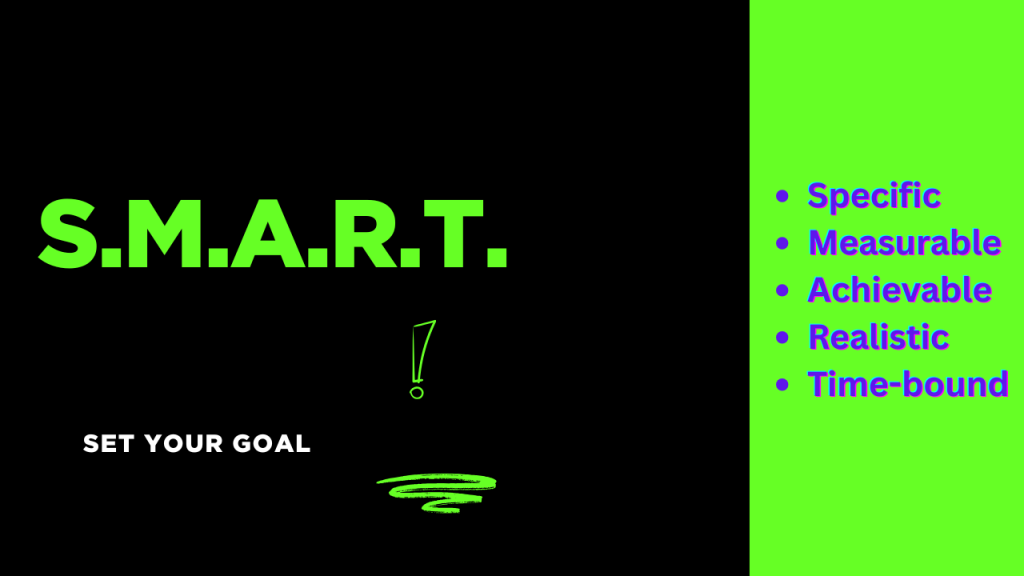Setting career goals is vital thing for us. Goals give us direction. They help us focus and work toward something that matters. But to succeed, our goals must be realistic. This means our goals should be possible to reach, not too easy and not too hard. In this essay, we’ll discuss about what realistic career goals are, why they matter, and how to set them in a smart and simple way.
What Are Career Goals
Career goals are plans you make for your job or work life. They can be short-term or long-term. A short-term goal is something you want to do soon maybe in the next few months or within a year. A long-term goal is something bigger you want to achieve in a few years.
Here are some examples:
- Short-term goal: Learn how to use Microsoft Excel or codding
- Long-term goal: Become a CEO at your company

Why Realistic Goals Are Important
If your goals are too big or too difficult to reach right now, you might feel stressed or disappointed. You may give up before you even get started.
For example, if you just started learning about computers, it’s not realistic to say, “I want to be a top software engineer in one year.” That goal may be possible someday, but not that much fast.
On the other hand, if your goals are too small or too easy, you may not grow. You need a good balance—goals that challenge you but don’t overwhelm you.
How to Set Realistic Career Goals
Now let us see some proven steps to set realistic Career Goals.
Step 1: Know Yourself
Start by thinking about yourself. Ask:
- What are my skills?
- What do I enjoy doing?
- What am I good at?
- What do I want to learn?
If you know what you like and what you’re good at, you can choose goals that fit you. For example, if you enjoy helping people, a goal to become a nurse or social worker might make sense. If you love solving problems, maybe a goal in technology or engineering is better.
Step 2: Think About the Future
Where do you want to be in 5 or 10 years? This can be your long-term goal. Then think about what steps you need to take to get there.
Let’s say you want to become a teacher. That’s a long-term goal. But you need smaller goals first:
- Finish your college degree
- Take a teaching course
- Get teaching practice
- Apply for jobs
These small steps help you reach the big goal.
Step 3: Use the SMART Method
A good way to set goals is to use the SMART method. SMART means:
- Specific: Be clear about what you want.
- Measurable: You should be able to track your progress.
- Achievable: Make sure it’s something you can really do.
- Realistic: It should fit your life and skills.
- Time-bound: Set a deadline.

Here’s an example of a SMART goal:
“I want to learn basic coding in three months by taking an online course and practicing two hours each day.”
This goal is specific (learn coding), measurable (you can track your learning), achievable (you have time to study), realistic (basic coding is a good start), and time-bound (three months).
Step 4: Break Big Goals into Smaller Steps
Big goals can feel scary. The best way to handle them is to break them into small parts. Think of each part like a step on a ladder. One step at a time.
For example, if your goal is to start your own business, you could break it into steps like:
- Research your business idea
- Learn about starting a business
- Save some money
- Create a business plan
- Launch your business
Taking small steps helps you stay motivated and keeps things simple.
Step 5: Be Flexible
Sometimes, things don’t go as planned. That’s okay. Life changes, and your goals might need to change too.
Maybe you wanted to be a chef, but later you discover you like working with kids more. You can change your goal. What matters is moving forward with something that fits you now.
Being flexible also means giving yourself time. If something takes longer than expected, don’t quit. Adjust your plan and keep going.
Step 6: Track Your Progress
Check on your goals often. Ask yourself:
- Am I getting closer to my goal?
- What have I done so far?
- What do I still need to do?
This helps you stay on track. If you’re not making progress, think about why. Maybe you need more time, or maybe you need help. That’s okay too.
You can also write your goals down and keep a journal. This helps you stay focused.
Step 7: Ask for Help
You don’t have to do everything alone. Talk to people who can help—teachers, mentors, coworkers, or friends. They can give advice, share their stories, or help you find resources.
You can also learn from others who have done what you want to do. Read their stories or watch videos online. This can give you ideas and keep you inspired.
Tips to Stay Motivated
Setting goals is the first step. Staying motivated is the next challenge. Here are a few tips:
- Celebrate small wins. Even small progress is success.
- Remind yourself why you started.
- Talk to others who support you.
- Keep a visual reminder (like a vision board or checklist).
- Don’t compare yourself to others. Everyone moves at their own pace.
Final Thoughts
Setting realistic career goals helps you take control of your future. It’s not about being perfect or doing everything fast. It’s about knowing what you want, planning step by step, and being patient with yourself.
Start small, stay focused, and don’t be afraid to change your path if needed. With clear and realistic goals, you can build a career that makes you proud and happy.


Such a detailed article with complete clarity.
Nice information 👌